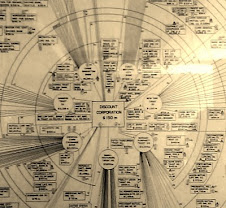Catholics, Protestants, Jews, Muslims, Buddhists, Zoroasters,
Hindus, Humanists, Animists and Atheists can probably agree on one thing at the
moment: His Holiness Pope Francis is
rocking the boat more than has been done in a long time – possibly since a
certain disciple credited to be the first pontiff was in a dinghy on the Sea of
Galilee with his Master. “Peace, Be
Still,” is not uttering forth from his lips but is the fervent prayer of many
of his politically correct, consensus surfing followers who have greatly
benefited from ephemeral morality. To
his credit, his recent appearance in Israel has done nothing to earn him points
in accommodative pandering. And,
according to press statements, President Mahmoud Abbas and President Shimon
Peres have agreed to join him at the Vatican on June 6, 2014 to share in a
Prayer for Peace.
In his encyclical “Evangelii Gaudium” Pope Francis clearly
articulated a clarion call for the world to take seriously the need to have
economic justice on Earth. Upsetting the
modern day aristocracy (both the religious and secular) with what talk show
host Michael Savage callously disparaged as “Karl Marx in a papal outfit,”
(evidencing Mr. Savage’s ignorance of the writings of Karl Marx which bear no
resemblance to the Pope’s missives), Pope Francis’ comments seem to be a voice
of rational morality in a world of asymmetric predation. On the other hand, advocates for donor-fueled
‘social justice’ campaigns have dared the Pope to turn the Vatican’s massive
wealth reserves into a colossal entitlement benefactor. And having seen the church’s massive land
expropriations around the world – robbing countless communities of their prime
agriculture, mineral and energy resources conveniently surreptitiously stewarded
by mercenaries upon whom the church’s wealth has been built – I am sympathetic to
the call to have this pope actually emancipate stolen holdings as evidence of
his joyful gospel!
But both Savage and Social Activist are reflexively
responding to semantics while failing to contemplate where the Vatican should
be encouraged to go. In a world defined
by expropriation, generations of exterminated options are inextricably our
hideous legacy. The “great American
experiment” imagined by Alexis de Tocqueville in the 1830s cannot expunge the
fact that its foundational labor was indentured and enslaved, its territorial
expansion was based on theft and murder, and its hegemonic dominance at present
is predicated on capital manipulation – not on democratic, free markets. The Catholic Church in 2014 cannot find
enough pontifical holy water to wash its hands of the complicity it has in the
Crusades in which it sought to wrest control of land from the “infidel” only to
find out that it was seen by the land’s occupants as infidels. And like the disputed “Nazi” confiscation of
artwork during the Second World War which fueled legitimate and illegitimate
claims to reparations and repatriation, the idea that you give back to today
some token of what was stolen in recent and ancient past is ludicrous. The impulse for justice to be equated to
recompense is simplistic and nonsensical as neither the beneficiary nor the
competence of stewardship would render such impulses effective or salutatory. So, to both reflexive arguments I offer a
simple plea: cool your jets and think!
What could you do with the wealth of the Vatican – both in
its reserve vaults buried throughout the world and in its vast land holdings –
which would actually let some version of a ‘gospel’ be experienced? Well, that’s a fascinating question and one
that the good Father has not appropriately engaged. Under a simple calculation, the liquid and
reserve asset ‘collateral’ of the Catholic Church would support a bank – think of
a credit union – with liquid credit origination capacity of over $180 billion. Add physical land holdings and liquidity on
revenue and you have a global bank which would exceed the scale and capacity of
Industrial & Commercial Bank of China, HSBC Holdings, Credit Agricole, BNP
Paribas, or Mitsubishi UFJ – the world’s top five banks by asset holdings. And if the church was serious, it could
replace all the development banks in the world with a capital offering that, at
maturity, would repatriate collateral to countries from whom it stole lands in
a structured transaction ripped from the very document upon which it purports
to draw its authority – the principle of Jubilee. Imagine a seven-year plan that, if executed
by its own dogmatic architecture drawn from its own sacred text, would eradicate
present day poverty by improving the lives of the economically “poor” by over
100%. And it wouldn’t have to change ANY
of its beliefs.
Now why is this path untaken by the Holy Father? Why is he offering to host prayer breakfasts
but unwilling to actually use his own biblical principles to address the
injustice that he sees in others? Well,
for two reasons. First, he’s running an
institution that sees charity rather than stewardship as its best offering in
the world. By preserving a patriarchal system,
he is blinded to the very principles that built Joseph into the greatest
economist of all times in the seven years leading up to Egypt’s devastating seven
year famine. Second, he’s being advised
by those who have a vested interest in preserving the vestiges of justice
hiding under his vestments (sorry, I couldn’t resist a bit of “V”)! If he’s serious about a gospel, he should
read his own book. His theology is great
for boat rocking but he needs to listen to a voice that can calm the
storm. So far, that message is being
lost in pandering and that’s a cardinal sin.




.jpg)



